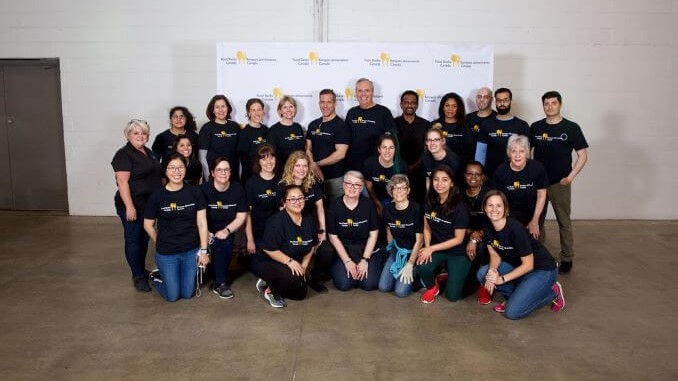This year, Food Banks Canada’s After the Bell program aims to alleviate the issue of food insecurity among youth across the nation by delivering 150,000 healthy food packs to Canadian children.

The After the Bell program was originally created in order to support students whose families rely on public school food programs, and thus suffer to access adequate nutrition when school is not in session through the Summer months. After the Bell works with nearly 200 community food banks and community organizations all across Canada, with representation in all 13 provinces and territories. Food banks and community organizations who apply to be a vessel for this program all have distribution partners through their communities. “They [Food banks and community organizations] could for instance be working with their municipalities on a summer food program, or they could be working with their local girls and boy scouts”, explained Tania Little, Chief Development and Partnerships Officer.
Food banks and community organizations that are accepted receive packs of food relative to the number of children that they are able to support each year in order to distribute them weekly. In addition to the packs of non-perishable, child-friendly food, they are also supplied with shelf-stable milk, and a fresh food stipend, allowing them to purchase fruits and vegetables within their region. This ensures that they are able to provide nutritionally complete snack packs to children, going above and beyond what they would typically receive in a supplemental program. “These foods are really geared towards meeting the needs of growing minds and bodies, as well as making these packs robust, flavourful, and appealing to kids with lots of variety”, Tania said.
More now than ever, this program, and its reliability, is needed among families as the COVID pandemic has stifled food banks and supplemental programs throughout the past year. In addition, more children are dealing with income instability at the moment, which happens to be the prevailing cause of food insecurity. “50% of food banks have seen a significant, between 50% and 200% increase, of new clients coming to their doors. So proportionally, with 35% of those people being kids, that’s a lot of support being needed year after year”, Tania explained.
With wavering restrictions, school supplemental programs and food security organizations have been unable to operate at full capacity this past year. There was great instability regarding attendance in schools, restrictions around volunteers and food handling safety, resulting in
inconsistency even when schools were open. “I think in the scheme of what you prioritize, I think that when kids were in class they [teachers] were focused on teaching and managing remote and in-class learning. It [supplemental food programs] wasn’t being offered in the traditional setting where kids and families could rely on it during the school year”, Tania explained.
If you have resources available, there are several ways in which you can help to make a difference in your community. You can first visit the Food Banks Canada website’s Find a Food Bank feature in order to locate your local neighborhood food bank as well as gain insight on their specific needs and how you can volunteer your time. You can then support their local food bank by donating non-perishable goods from the grocery store such as canned beans, rice, and oil, or by making a financial donation to your local food bank, which gives the maximum amount of flexibility for your local food bank. Local food banks have the ability to buy food at cost or better, make culturally and geographically relevant food choices, and purchase perishables such as eggs, meat, dairy, fruits and vegetables, ensuring that they are fresh when provided to children and families.
To learn more about After the Bell, visit Food Banks Canada’s website.




